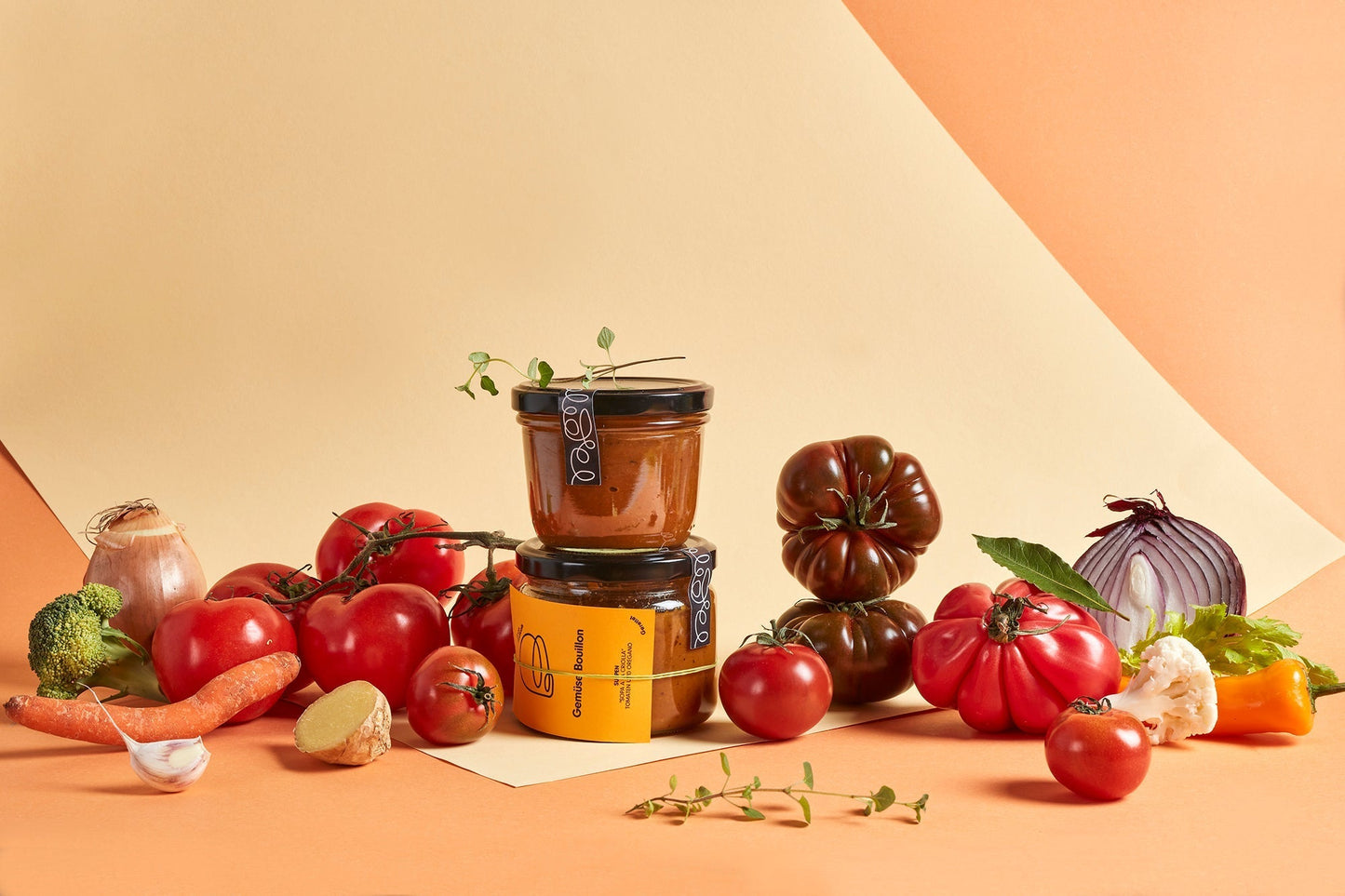
Introduction
I remember the first time I tried making hot sauce at home. It was a messy affair with fresh peppers, vinegar, and a blender, but it got me thinking about how these spicy condiments are produced on a larger scale. As someone passionate about sustainable food, I dove deeper into the world of hot sauce production. Today, at Roots Radicals, we're all about turning potential waste into flavorful treasures. In this post, we'll compare traditional hot sauce production with our zero-waste approach, highlighting the environmental impacts and why choosing sustainable options matters. It's like peeking behind the curtain of your favorite bottle— and discovering how our methods not only save the planet but also create bolder, probiotic-rich tastes.
Understanding traditional hot sauce production
Traditional hot sauce making often starts with growing peppers on large farms, where synthetic pesticides and fertilizers are common to boost yields. Once harvested, the peppers are typically mashed or blended with vinegar, salt, and sometimes additives for preservation. Many industrial processes involve cooking the mixture at high temperatures or pasteurizing it to kill bacteria and extend shelf life. This energy-intensive step requires significant electricity or gas, contributing to greenhouse gas emissions.
From there, the sauce is bottled, often in plastic or glass, and shipped worldwide. Transportation adds to the carbon footprint, especially for brands sourcing ingredients globally. Waste is another issue— pepper skins, stems, and unused parts often end up in landfills, releasing methane as they decompose. Studies show that conventional food processing, including sauces, leads to high energy use and emissions from farming to manufacturing.
One example is the well-known Sriracha production, which once caused community complaints due to odors from processing, highlighting how large-scale operations can affect local environments.
The zero-waste approach at Roots Radicals
At Roots Radicals, we flip the script by embracing circular economy principles. Our hot sauces begin with rescued ingredients— like imperfect peppers and chilis that would otherwise be discarded. We ferment them naturally over weeks, which not only preserves the sauce without energy-heavy heating but also develops complex flavors and adds probiotics. Fermentation reduces the need for artificial preservatives and lowers our overall energy use.
Every by-product is upcycled: for instance, pepper scraps become spices or flakes. This zero-waste mindset means we're saving resources while creating delicious, eco-friendly products. It's rewarding to see how our methods cut down on food waste, which globally accounts for massive emissions— and we're proud to be part of the solution.
Explore our full range in the hot sauces collection to see these principles in action.
Comparing the two: environmental impact
When we stack traditional methods against zero-waste ones, the differences are stark. Traditional production often has a higher carbon footprint due to intensive farming, processing, and transport. For example, a typical hot sauce might emit around 1.27 kg CO2e per kg, largely from energy and waste.
In contrast, fermented and upcycled approaches like ours boast lower emissions— studies on sustainable sauces show reductions in carbon and water use.
Here's a quick comparison:
| Aspect | Traditional Production | Zero-Waste Production |
|---|---|---|
| Ingredient Sourcing | Large-scale farms with pesticides; high waste | Rescued, upcycled ingredients; minimal waste |
| Processing Method | Cooking/pasteurization (energy-intensive) | Fermentation (natural, low-energy) |
| Carbon Footprint | Higher (e.g., 1.27 kg CO2e/kg) | Lower (reduced by up to 50% via sustainability) |
| Waste Management | Landfill disposal of by-products | 100% upcycling into new products |
| Water Use | High in farming and cleaning | Conserved through efficient processes |
Why zero-waste hot sauces taste better and save resources
Beyond the environment, our methods enhance flavor. Fermentation brings out umami and depth that vinegar alone can't match. Plus, using rescued ingredients means we're preserving nutrients that might otherwise be lost. It's a win for taste and the planet.
Take our lineup— each sauce tells a story of sustainability. They're all vegan and gluten-free, packed with bold tastes from upcycled elements.
Product spotlight: Harissa Hot Sauce
I love how our Harissa Hot Sauce captures Moroccan vibes with bell peppers and chilis. Made with 40% upcycled ingredients, it's fermented for that authentic kick. Drizzle it on falafel or stews— the olive oil and spices blend perfectly. And the best part? By-products become our Harissa Spice, closing the loop.
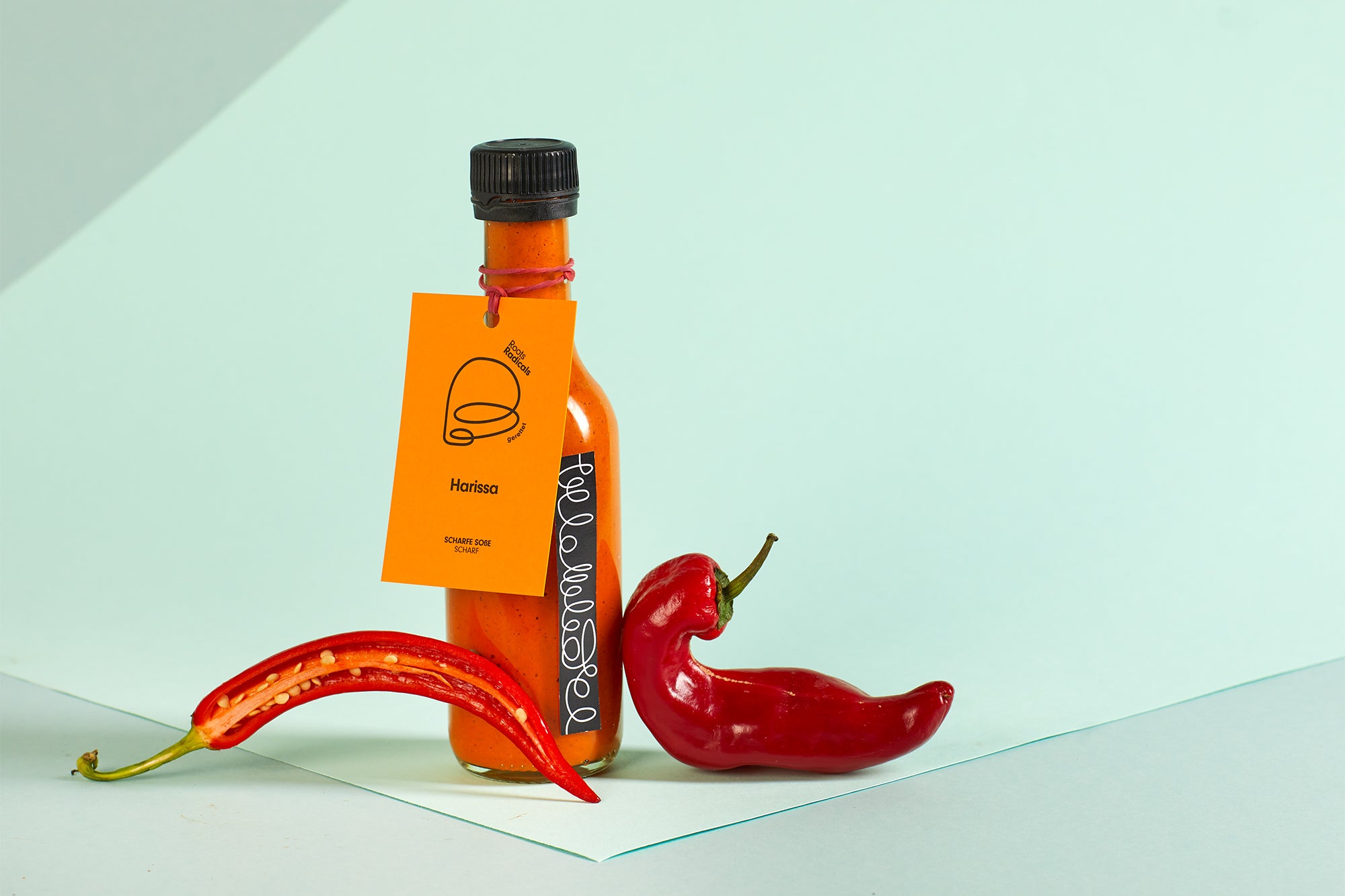
Shop this sustainable spice booster at Harissa Hot Sauce.
Product spotlight: Fermented Jalapeño Hot Sauce
This one's a classic in my kitchen— fermented jalapeños give it a tangy heat that's probiotic-rich. With by-products upcycled into flakes and garlic salt, it's zero-waste magic. Perfect for tacos or eggs, it adds fire without the guilt.
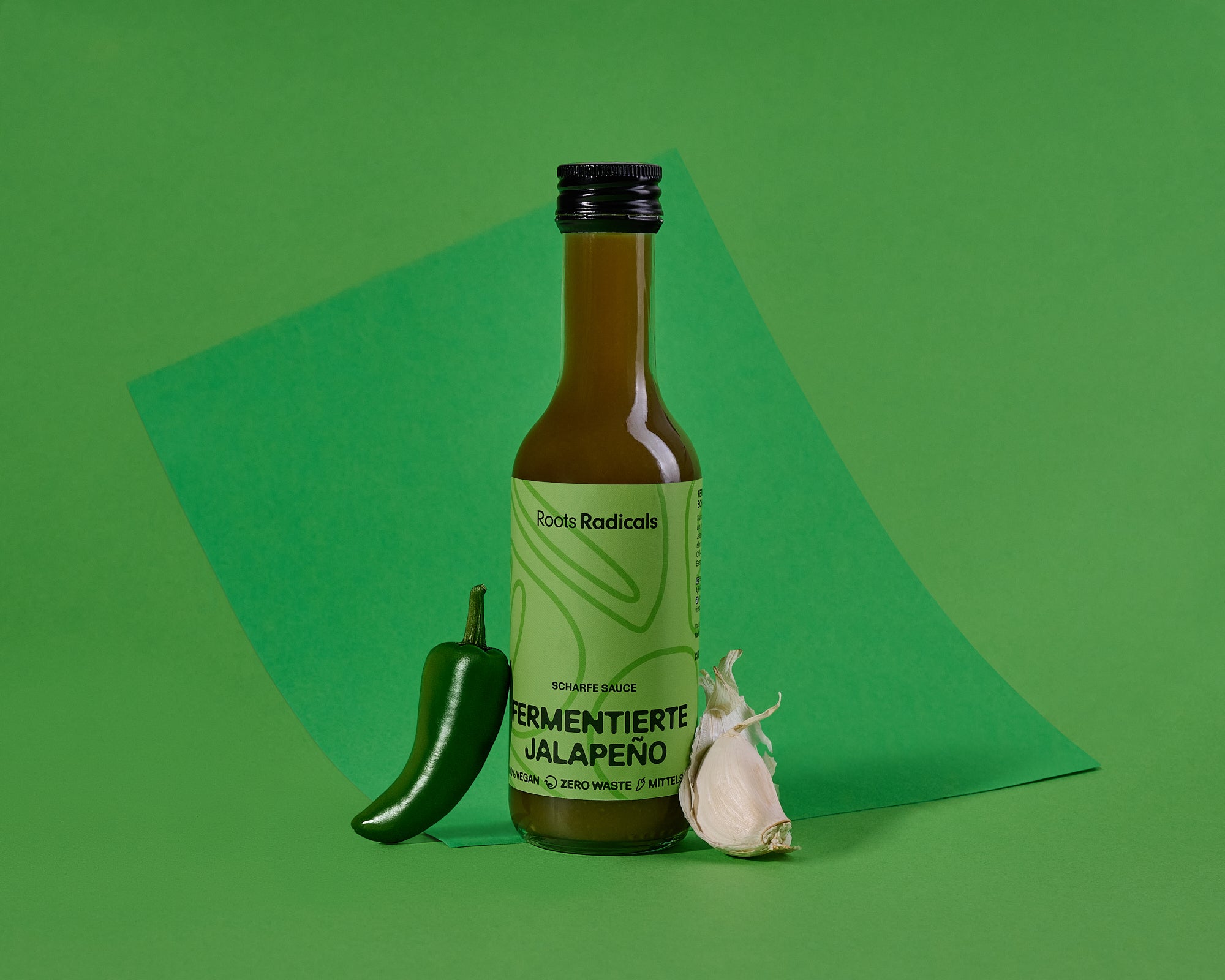
Grab yours from the fermented collection or directly at Fermented Jalapeño Hot Sauce.
Product spotlight: Sweet & Sour Hot Sauce
For a balanced twist, our Sweet & Sour Hot Sauce uses 55% rescued bell peppers and chilis. The fermentation process creates a harmonious flavor that's great for stir-fries. No waste here— everything's repurposed.

Try it now via Sweet & Sour Hot Sauce.
Product spotlight: Sambal Hot Sauce
Inspired by Indonesian travels, this sauce ferments chilis with macadamia and lemongrass for an aromatic punch. 55% rescued ingredients, and it's versatile for curries or soups. Upcycling keeps our impact low.
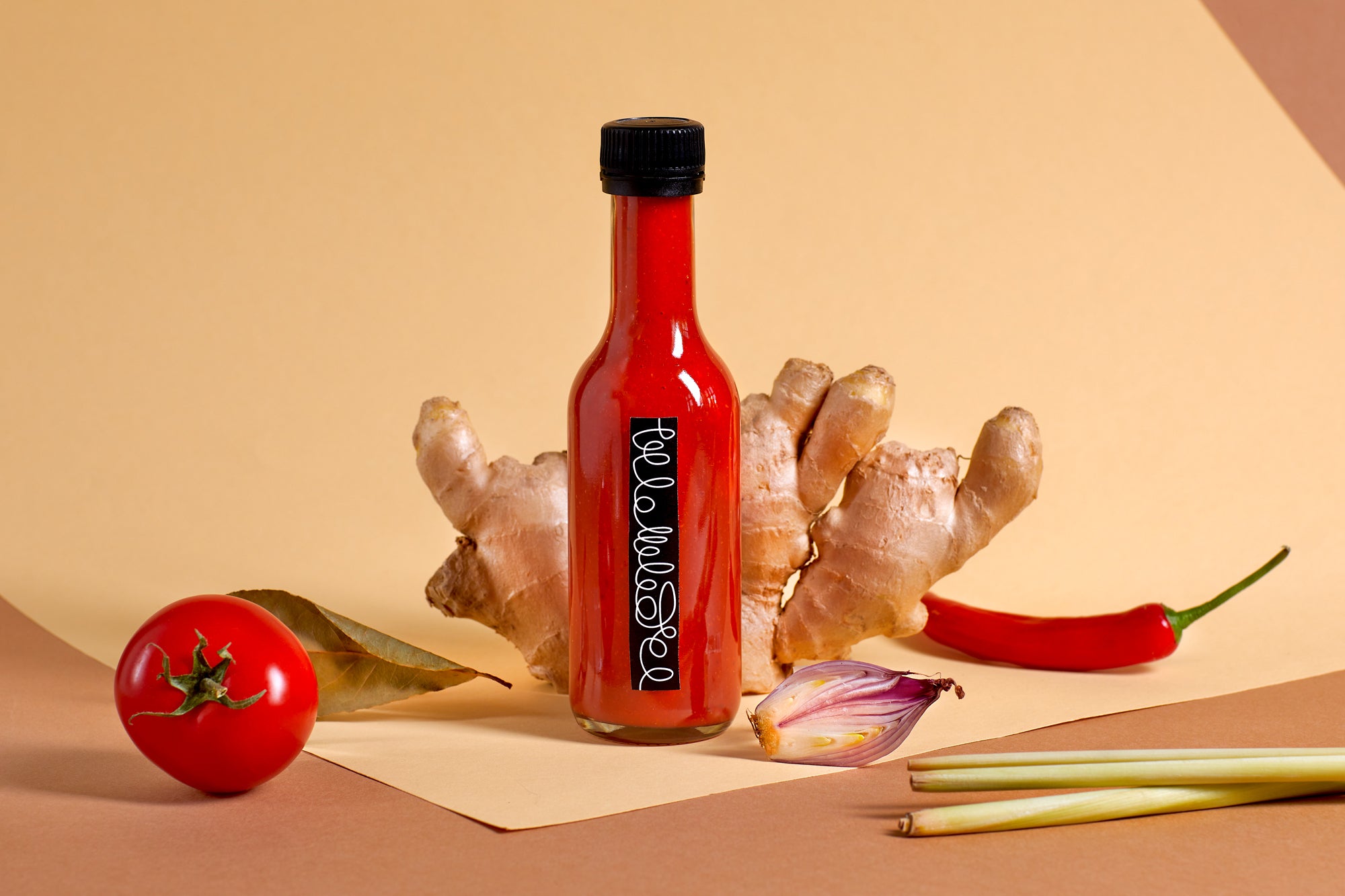
Discover more in our savoury preserves collection or buy at Sambal Hot Sauce.
Product spotlight: Banana BBQ Sauce
Though not strictly hot sauce, our Banana BBQ brings smoky heat with 33% rescued bananas. It's a fun, sustainable alternative for grills, blending sweetness and spice.
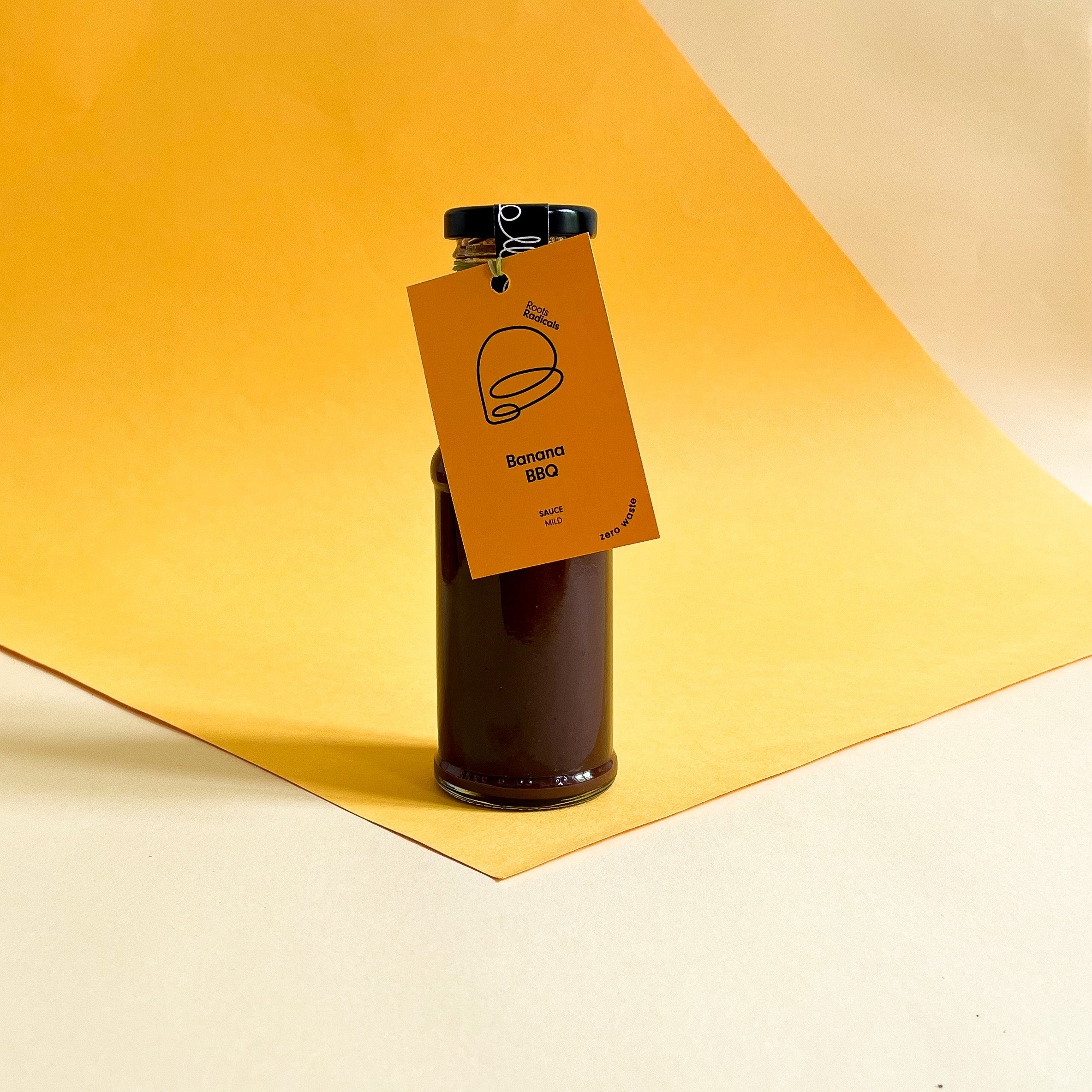
Check it out at Banana BBQ Sauce.
Hot sauce production comparison: key products
Here's how our sauces stack up in sustainability:
| Product | Rescued Ingredients % | Key Flavors | Upcycled By-Products |
|---|---|---|---|
| Harissa Hot Sauce | 40% | Spicy, garlicky | Harissa Spice, Citrus Peel |
| Fermented Jalapeño | Not specified, but fermented | Tangy, hot | Jalapeño Flakes, Garlic Salt |
| Sweet & Sour | 55% | Balanced sweet-hot | N/A direct, but zero-waste |
| Sambal | 55% | Aromatic, nutty | N/A direct |
| Banana BBQ | 33% | Smoky, sweet | Uses bouillon |
Benefits of choosing zero-waste hot sauces
Opting for our sauces means supporting a healthier planet and enjoying better health perks.
| Benefit | Description |
|---|---|
| Probiotics | Fermentation adds gut-friendly bacteria |
| Zero-Waste % | Up to 100% upcycled in processes |
| Vegan/Gluten-Free | All our hot sauces qualify |
| Resource Savings | Lower water, energy, and emissions |
| Flavor Depth | Natural processes enhance taste |
Tips for sustainable hot sauce choices
Look for fermented options to cut energy use. Choose local or upcycled brands like ours. Reuse bottles and support circular economies. Start with our all products collection for more ideas.
FAQ
- What is the main environmental issue with traditional hot sauce?
- High energy for processing and waste from by-products, leading to emissions and pollution.
- How does zero-waste production reduce impact?
- By upcycling everything and using low-energy fermentation, cutting waste and carbon.
- Are Roots Radicals hot sauces healthier?
- Yes, probiotic-rich and made with natural, rescued ingredients.
- Can I use these in everyday cooking?
- Absolutely— from dips to marinades, they're versatile.
- Where to buy?
- Shop our hot collection today!
Conclusion
Comparing traditional and zero-waste hot sauce production shows how small changes make big differences. At Roots Radicals, we're committed to flavorful, sustainable options that rescue ingredients and minimize harm. Ready to spice up your meals guilt-free? Browse our hot sauces and join the circular movement. Your taste buds— and the planet— will thank you.
